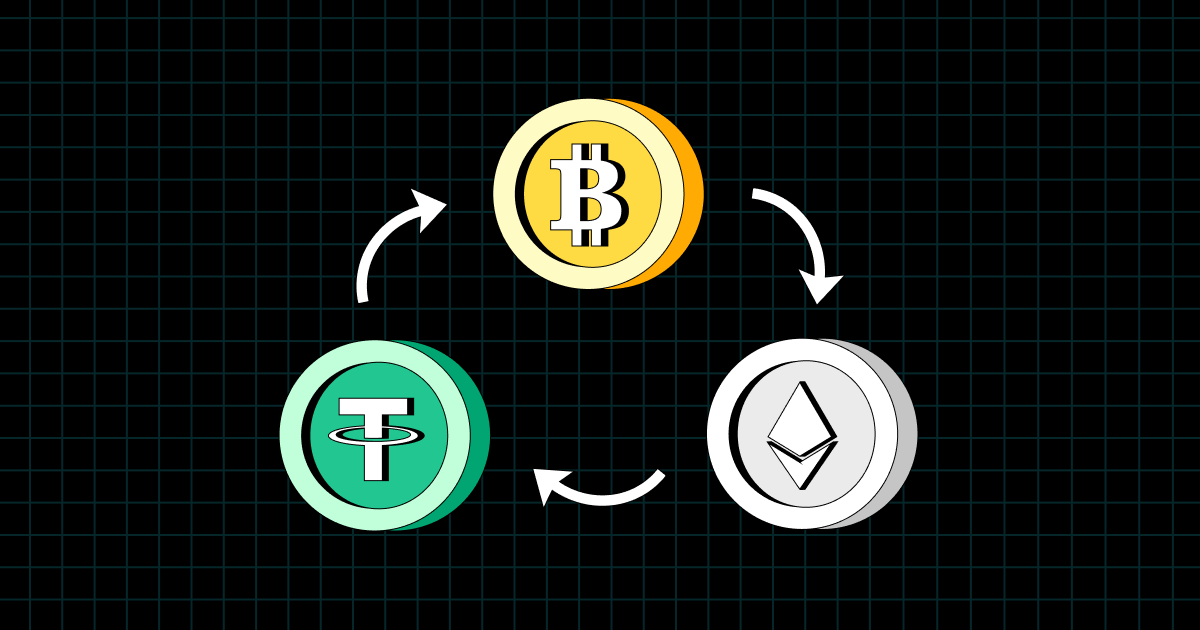The digital market is not subject to a single center, so the price of the same asset can vary significantly on different exchanges. It is from this feature that a method of benefiting, known as spread betting, was born. Understanding what interexchange arbitrage is opens the doors to earning a profit on exchange rate differences without the need for in-depth analysis of charts and trends. Instead of speculating on volatility, it involves cold calculation and instant execution of trades.
What is interexchange arbitrage in practice?
This term refers to the trading process where a trader buys cryptocurrency on one platform at a lower price and simultaneously sells it on another platform at a higher price. The difference in quotes forms the basis for profit.

Interexchange arbitrage in technical terms involves interacting with at least two exchanges, synchronizing accounts, accurate commission tracking, and asset transfer speed. Each of these factors affects the overall efficiency of the scheme.
How to profit from cryptocurrency exchange rate differences?
Profiting from price discrepancies is not a new idea, but with the emergence of digital assets, it has gained new life. The process involves several steps. The first step is monitoring trading pairs on different exchanges. The next step is quickly buying on a platform with the lowest price and simultaneously selling on one where the price is higher.
The time window between the opportunity arising and disappearing can be less than a minute, especially with large volumes where even fractions of a percent yield significant profits. This rapid market development vividly illustrates what interexchange arbitrage is—a strategy where reacting quickly to price discrepancies between platforms is crucial.
Pros and cons of interexchange arbitrage—an objective view
The method of earning through interexchange arbitrage is attractive because it does not require deep technical analysis, allows the use of trading bots to automate processes, and is characterized by a relatively low level of risk with proper preparation. The fast cycle of operations ensures a quick return of capital, and the variety of exchanges and trading pairs offers a wide range of opportunities for flexible maneuvering.
However, despite the clear advantages, it is important to consider the limitations. This strategy is sensitive to commissions and possible delays in transfers between platforms. It is also essential to consider possible withdrawal limits, mandatory account verification, and exchange rate fluctuations occurring during transactions.
Equally important is the high level of competition: experienced traders and algorithms constantly scan the market for profitable discrepancies. A balanced approach and analysis of all factors help understand what interexchange arbitrage is and avoid disappointments right from the start.
Features of interexchange arbitrage—what to pay attention to?
The mechanism is simple in theory but requires consideration of many nuances in reality. For example, different exchanges use different APIs, have input/output restrictions, require KYC compliance, all of which affect the accessibility of operations. Additionally, one should not forget about timeframes—the longer the transfer between platforms, the higher the risk of losing the price difference.
The key feature is commission calculation, as it can nullify profits.
What is interexchange arbitrage from an automation perspective?
Manual trading requires high concentration and time. Therefore, bots capable of monitoring dozens of trading pairs per second and executing trades instantly when differences arise take the forefront.
These algorithms work based on set criteria: minimum spread, commission limit, order book depth, available capital. However, before launching an automated system, thorough testing is crucial—mistakes can cost more than potential earnings.
Best arbitrage trading strategies
In arbitrage practice, several models can be applied, each with its own specifics. Below are the most common approaches:
- classic two-way exchange between two exchanges;
- triangular variant involving three currencies on one platform;
- interregional considering time zones;
- cross-platform with different price update speeds;
- trading using derivatives and spot assets.
Each strategy requires its level of preparation and control. The result directly depends on the accuracy of execution and system configuration.
Interexchange arbitrage fees and their impact on profitability
Regardless of the strategy, fees play a crucial role in calculations. They include exchange transaction fees, asset withdrawal fees, fees for depositing funds on another platform, and possible expenses when exchanging between currencies. Added to this are delays that can affect the rate and alter the initial calculation.
In some cases, the cumulative costs turn out to be higher than the potential profit, especially when dealing with small trading volumes.
This is the only way to effectively apply the strategy and understand what interexchange arbitrage is in real market conditions.
Education and preparation for spread betting
Before moving on to real actions, it is important to undergo at least basic training. Trading strategy on exchange rate differences requires understanding:
- trading logic and exchange operations;
- specifics of the assets being traded;
- profit calculation considering commissions;
- working with bots and APIs;
- evaluating operation timelines and limits.
This foundation is necessary not only for security but also for understanding what interexchange arbitrage is in reality, without illusions and exaggerations.
How to choose exchanges for arbitrage trading?
One of the key steps is choosing platforms where the strategy will be implemented. When forming an effective approach, it is important to consider the reliability and reputation of the exchange, transaction processing speed, and the availability of a wide range of trading pairs.
An important factor is access to APIs and support for algorithmic trading through bots, allowing the automation of routine actions. Flexible conditions for depositing and withdrawing funds, transparent fees, and sufficient market depth ensure stable operation and predictability of transactions.
This is how the essence of what interexchange arbitrage is revealed—not only in theory but also in practical implementation.

What is interexchange arbitrage?
The cryptocurrency market remains one of the most dynamic and open to trading strategies. Among the multitude of approaches, spread betting remains the most pragmatic and structured. Understanding what interexchange arbitrage is allows one to go beyond ordinary speculations and profit from mechanical price discrepancies.
With increasing competition and logistical complexity, this approach requires more professionalism, precise calculations, and technical readiness. However, for those who can quickly analyze and make decisions, arbitrage trading can become a stable source of profit.
 en
en  ru
ru  de
de  ar
ar  es
es  nl
nl  hi
hi  fr
fr  it
it  pt
pt  el
el 











